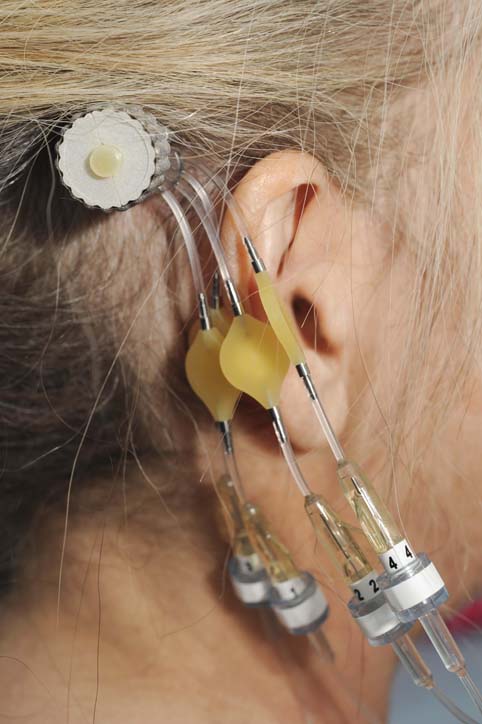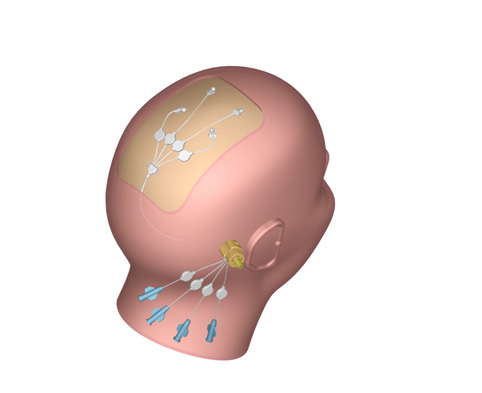Founded by Sir David McMurtry and John Deer in 1973, the Gloucester-based company now employs more than 3,000 people, specialising in the kind of advanced manufacturing technology that most low-wage economies can’t compete with. It does most of its manufacturing in the UK, sells most of its products abroad and ploughs more than 15 per cent of its revenue back into R&D.
And it’s this focus on research that has helped the company expand from the metrology business into a broad range of technologies including 3D printers, scientific equipment utilised in IVF research and robots for neurosurgery. Its latest research innovation, which the company showcased at this summer’s The Engineer conference, is perhaps one of its most fascinating: a device made using a 3D printer that will be able to administer drugs directly to the brain for treating various forms of cancer, Parkinson’s and other neuro-degenerative diseases

The device is designed to overcome the blood-brain barrier that usually acts as an obstacle to large drug molecules. Once implanted, it provides a way to inject drugs through an external port at the back of the head into four channels that can deliver precise doses to different parts of the brain. This also has particular advantages in oncology. ‘The problem [with chemotherapy for the brain] has always been that to get [the drugs] in an effective concentration, you were susceptible to significant damage to other organs such as your kidneys and liver,’ said Geoff McFarland, Renishaw’s group engineering director.
‘What this technique does is put the drug on the other side of the blood-brain barrier, which is designed to stop large molecules such as bacteria getting across from the bloodstream into the brain, but goes some way to keeping [the drugs] in.’ Delivering the drugs directly to the brain in this ways achieves a much more controlled therapeutic dose while using less and without seriously affecting the rest of the body, he said. ‘People are very sick after chemo normally, of course. That is less likely to happen with this system.’

Renishaw has been producing innovative technologies since its creation 30 years ago, when McMurtry and Deer were working for Rolls-Royce on the Olympus engine for Concorde. McMurtry had left his home town of Dublin aged just 19 to become an aerospace apprentice with Bristol Aero Engines — today he has just a trace of an Irish accent remaining — and after the company merged with Rolls-Royce he worked his way up to assistant chief of engine design. Faced with the challenges of making more accurate three-dimensional co-ordinate measurements of machined components for the Olympus, he went away and designed a touch-trigger probe that solved the problem.
‘I thought it was job done,’ he said, ‘until the supplier of the measuring machine said “I want to buy some; where do I get them?” I made a couple but I had to find somebody who would get the thing made for me.’ Fortunately for McMurtry, Rolls-Royce wasn’t interested. ‘They didn’t want to do it themselves. I went to the director of design and said “I think this has got commercial prospects”. He said it was just a distraction and to forget it, and then I insisted until I annoyed him so much that he said “for God’s sake, go away, go bust and come back”.
Instead of going bust, McMurtry and Deer gradually built a company that has become one of the UK’s premier precision engineering companies, with each new product expanding the company’s expertise and leading in turn to new areas. ‘The vast majority of what we’ve done has been organic growth,’ said McFarland, who joined the company in 1994. ‘But fundamentally we’ve got one foot in metrology and the other foot in the applications.’

Which is how the company that started making aerospace probes has come to be designing drug-delivery devices for brain diseases. A request for dental scanners 10 years ago opened the door to the medical industry, and the company’s work in additive manufacturing, which stretches back just as far, led to the creation of bespoke implants. So when a consultant made enquiries about how he might improve deep brain stimulation (DBS) rods, McMurtry took interest in a possible new area of growth: neurological implants.
The device that Renishaw developed to meet the challenge of brain drug delivery brought together the company’s competencies in 3D printing to personalise the device, traditional subtractive machining to improve its fit and biocompatibility and all the measurement tools that enable it to be implanted in the patient’s head accurately.
‘There’s a software planning application that basically uses magnetic resonance data,’ said McFarland. ‘Then there’s a guided robot that we use to manipulate it to the correct areas using that image-based data.’ McMurtry added: ‘We can only do all this because we can pick up all these locations with a probe. The core technology is all in here.’
There was an obstacle, however, in the need to design a port through which drugs could repeatedly be injected in a precise manner without it moving around or promoting infection. And in a move that demonstrates how being chairman and chief executive of a £300m company hasn’t distanced him from the engineering side of the business, it was McMurtry who came up with the solution after meeting someone in a pub.
‘Basically, the surgeons we were talking to believed you couldn’t come through the skin because of the integration of the flesh around the port,’ he said. ‘But I saw this guy in a pub and he had a BAHA [bone-anchored hearing aid] implant put in. They had put a screw into the bone that came right through the skin… and we copied the way they came through and hid it behind the ear like they did. But we’re putting a pathway, passing fluids through it, and they were just passing sound so it was quite different.’

McFarland argues that the new device, which is undergoing trials with drugs for Parkinson’s and cancer, also demonstrates how 3D printing is a tool in the manufacturer’s box that can be used alongside traditional methods rather than replacing them. In the case of the implant, additive manufacturing provides the necessary personalisation (the area where the technique currently has the most to offer) but subsequent subtractive manufacturing is required to get the level of precision essential for it to function.
‘It has to have an external surface that’s bio-integratable, but internally it has to have relatively precise channels,’ he said. ‘And where additive is not particularly good is in making flat surfaces. So that’s where subtractive comes into play, and in things such as making precision round holes… The implants go into your jaw and into your bone to act as the anchors. So you need to be able to put it on and not store any energy in those implants, otherwise you’re causing movement and pain. Those have to be done incredibly precisely, sub 20 microns, so that’s a subsequent five-axis machining process.’
As he told the conference audience, McFarland believes that it’s by combining 3D printing with traditional methods in this way that real progress will be made. ‘There are lots of tools out there. Additive manufacturing is just one of those tools and that’s the way I think industry needs to see it,’ he said. ‘It’s how people adapt to using the new tool — the most appropriate solution to the challenge; that is the key thing… Additive manufacturing will really be known when it’s just called manufacturing.’
Sir David McMurtry - Chairman and CEO, Renishaw
Education
- 1964 Completed apprenticeship with Bristol Aero Engines/Bristol Siddeley
Career
- 1964 - 1976 Various roles at Bristol Siddeley/Rolls Royce including assistant chief of
- engine design
- 1973 Founded Renishaw with John Deer
- 1976 Left Rolls Royce to focus on Renishaw
- 1987 Awarded Royal Academy of Engineering’s highest prize, the MacRobert Award
- 1994 Awarded a CBE ‘for services to science and technology’ and an honorary doctorate in engineering from the University of Birmingham
- 2001 Appointed knight bachelor ‘for services to design and innovation’ and elected a fellow of the Royal Academy of Engineering
- 2011 Elected a fellow of the Royal Society
Geoff McFarland - Group engineering director, Renishaw
Education
- 1990 BEng mechanical engineering, Heriot-Watt University
Career
- 1990 - 1993 Worked as research associate developing orthopaedic medical devices and then for Motorola
- 1994 Joined Renishaw’s Edinburgh research facility
- 1999 Became director and general manager of Renishaw’s co-ordinate measuring machine product line
- 2002 Appointed to Renishaw’s board of directors heading group engineering




April 1886: the Brunkebergs tunnel
First ever example of a ground source heat pump?